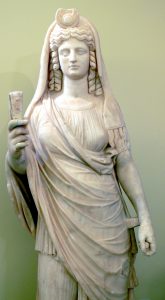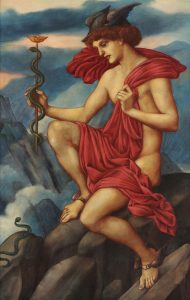The Scariest All Hallows Eve Story Ever
Apologies for the click bait title. Lately everything is the everythingest thing. Yet this is a Halloween ghost story in a very different sense, and hopefully worth the clique.
1979, Union College, Schenectady, under the neon glare of General Electric HQ, preparations began for the evening’s annual Halloween party at one of the fraternity houses. Our friends were the dance band, playing amaranthine songs in a holiday Grateful Dead-esque mode. Heady days of post-punk post-disco; dancing was cool again. And yes, there was a lysergic element to all this.
There ensued the usual face colorization, wigging, and sartorial gathering of elements for a costume and a character to inhabit it. I could not come up with a specific character to dress as, so just assembled whatever weirdness came: a refitted paisley sheet, a blinking light, can’t remember what else. Then we all took the short walk to the party.
The music started up, did a little dancing. Drank whatever was served. People were strangely attracted to what I was wearing, and in a friendly way kept saying, “Cool costume. Who are you?”
Back then I was painfully shy, and even in the best of circumstances found discourse with humans Sisyphean, thus I was speechless in reply. This seemed to increase curiosity, and the continuous “Who are you?” mantra reverberated through my cranial caverns. (Should add here that the Who’s “Who Are You” album and song had been released a year before.) Best as I tried, could neither dredge up a character for my costume, nor find a real self to be. “Who are you?” “Who are you?”
To escape the existential fuselage I retreated to the side of the band and shifted into what could only be called a danse macabre, a dervish sprung loose from the cosmos of ritual sema. But this only exhausted the body. I had to venture out into the gelid All Hallows night.
Came to a favorite spot, three intertwining white pine trees in a close equilateral triangle, such that the interior lay unseen and bedded with an inch of long, soft needles. Rolling in, and grateful for the protective arboreal embrace, which somehow dissipated the cold, the quest for an authentic self began.
I used every item in the entheogenic toolkit, spotlighted every corner of experience, still no sign of an independently existing self. Hours later, still none. The best I could find was an empty perspective of experience, a point of view without content. Eventually the exploration exhausted itself into sleep.
Awoke at the clarity of daybreak. It was stunningly laughable. There is no enduring self. The ego is a joke we tell ourselves over and over, never getting the punch line, in fact afraid to. Nothing to do but comb out pine needles and take off this ridiculous outfit. And then put on another . . .
Years later, studying the Yoga-Samkhya system, found that people thousands of years back saw through this. In Yoga, there is asmita, “I-am-ness”, which is considered a hinderance to knowledge. This is more or less the ego, that which thinks it is the doer of any action it claims for it self. Then there is ahamkara, “I-maker”, which is a necessary part of experience. It is simply our point of view, so that we can navigate this experience. It is simply part of the recurring construct of the eternal moment. You cannot cross a room without a perspective of being on one side of the room. None of that is an authentic, enduring individual or individuated self.
What is real then, will maybe be an Easter story . . .
Mockingbird by Walter Tevis
We recently finished The Queen’s Gambit, a seven-episode series about a chess prodigy who discovers her talent in an orphanage, visualizing complete games on the ceiling under the influence of tranquilizers. Although certainly about various addictions, it was not only uplifting without being maudlin, it actually played against common themes by not resorting to abuse or violence for a cheap emotional sting. Instead, it let the complex character relationships—and how they overcome personal obstacles—carry the narrative, without resorting to the blame game. Maybe the last part felt more credible as the show faithfully displayed the affectation and decor of the late fifties and early sixties, as opposed to the age of victimhood we currently inhabit.
That led to a search of the author of the eponymous book it was based on, who I’d not heard of, Walter Tevis (1928-84). Tevis has the unusual fact of having four of his six novels made into film. The earlier three are well-known: The Hustler (1959, film made in 1961); The Man Who Fell to Earth (1961, film 1976); The Color of Money (1984, film in 1986); with The Queen’s Gambit published in 1983. The large lacuna between the success in his 30’s and the productivity near the end of his short life is basically due to a protracted struggle with alcohol addiction and isolation, a theme that recurs in all his work.
Surprisingly, not all of his books are in print, but I managed last week to find the one not-terribly-expensive paperback of Mockingbird, his cult SF classic published in 1980, drawn to the title because it is the name of the CIA media infiltration and control program essential to maintaining a pliant population. Besides it being a top tier SF book, it is thematically and chillingly relevant to some of what is occurring now. This is why books will always be important, and why great writers need our support, even after they are gone.
Mockingbird takes place in 2467, 500 years after the Summer of Love, which it is in a sense the antipode to. Likely this was intentional. Reading has been eliminated for generations, NYC is run by “moron robots”—their intelligence is limited to the basic jobs they do—with a few higher level robots who can act as a judge, physician, or (surprise) politician. What humans are left exist on a diet of synthetic food and tranquilizing “sopors”—soporifics—with nothing essential or creative to do, mostly numbly watching 3D TV of endless sex, violence, and a combination of the two. In other words, a hell of addictions enabled by some sort of credit card universal income.
Not to get too boiled down in plot, there are a couple of prescient aspects to this book. The world here is basically one where the social distancing enforced today has played out over centuries and become codified and embodied. People are not raised in families, but in dormitories. No family life at all. In fact, co-habitation is a crime. People are entranced and circumscribed by slogans regurgitated throughout their lives: “Don’t ask, relax” (and take another sopor); “quick sex is best” (no intimacy, no eye contact, no conversation). People recoil from touch. “Privacy” is as enshrined as our Bill of Rights (used to be). There is little difference between the “moron robots” and the moron people. When faced with anyone doing something mildly out of the ordinary, their reaction is to play kapo-snitch and turn each other in to robotic “Detectors” (mask Nazis and contact tracers rejoice!). But, even the robots cower when challenged, and the human snitches just pop a few sopors and move along. As most of us are all feeling viscerally, tyranny depends on compliance.
Cannot help but be reminded of the large number of the young male population in Japan, where this seems to be clinically prevalent, who recoil from any live conversation, especially with women, and who prefer the soulless grind of robot sex and porn: only cyber simulacrum intimacy is possible. Thus the population declines.
In Mockingbird the solution for the two awakened characters is literacy. Benchley learns to read and write by watching silent movies and transcribing them. When he finds a dictionary it is the Rosetta Stone. There is added joy in these old movies as they include romance, emotional expression, family and—kissing! He finds Mary Lou, a woman who escaped the dormitories and the infertility-inducing sopors, living by her wits at the Bronx Zoo (where all the animals and all the children eating ice cream watching them are robots). They fall in love through learning to read the few books they can scavenge to each other, and by writing their own story.
The third protagonist is Spofforth, the last of the human-robot hybrids. “Spofforth” is a name that begs decoding, but other than “sopor” being in there, or something unhelpful like “spoof-forth”, I could use some help. Spofforth is hundreds of years old, and the only remaining version whose brain circuitry is copied from an actual unnamed brilliant human, excepting identity and memories. Still, he has dreams and snippets of poetry bleed in.
Spofforth cannot forget anything, is self-repairing (thus theoretically eternal), and runs NYC because no one else can abate the entropic systemic decay. He is the apotheosis of the AI dream. Yet Spofforth only desires one thing: to die. Yet he cannot, because his programming forces him to work with humanity as long as it exists. When he tries to kill himself his programming freezes him. Thus the hell awaiting all the drooling transhumanists (“And what could be closer to living death than aspiring to have your consciousness transistorized and encased in heavy metal?” Katabatic Wind).
Spofforth, who is willing to kill off humanity in order to be allowed to die, exhibits what is called ‘the banality of evil’. We, as a culture, as a country, as individuals, as spiritual beings ensconced in our peculiar 3d projection through our sensorium, are staring down our extinction as any of those things. The way through it is discriminative discernment, and reading great works fosters that. Especially in the analog paper versions. You can glean information and a few ideas from videos, but they mostly elicit parroting mockingbirds. Literature inculcates imagination, a higher level of being than logic and emotion. Read for the joy of it, knowing that all our lives depend upon it.
The Geminid Reality—Coda: The Western Prophetic Tradition from Parmenides to Leonard Cohen
by Stephen Crimi
Orpheus in the Underworld, Jan Brueghel the Elder, 1594.
What’s needed for you is to learn all things: both the unshaken heart of persuasive Truth and the opinions of mortals in which there is nothing that can truthfully be trusted at all. But even so, this too you will learn—how beliefs based on appearances to ought be believable as they travel all through all there is.
—Persephone (“Thea”) speaking to Parmenides in the Underworld about duality. (Peter Kingsley, translation, In the Dark Places of Wisdom)
We have been conditioned to view prophesy solely as a prediction of the future, a staring down and unraveling the tangled timelines from a hawk’s ærie. Yet prophesy in ancient days was more like a prediction of the present. The role of a prophet is to be chosen by the Divine to speak for the Divine. This often involves a peek into possible outcomes, but these are normally contingent on not heeding the oracle’s communiqué.
The expression of prophets and the Divine is of course culturally colored. The Greek Gods, especially the Oracles of Apollo at Delphi and Didyma, were cryptic, ambivalent, spoke in hexameter verse, and set a yawning trap for the ego. Most famously, in the 6th century BC, the king of Lydia, Croesus, thought he had the goods to take on the Persian Empire. He sent representatives to Delphi to ask if it was a smart move. The reply: “If Croesus goes to war he will destroy a great empire.” The emboldened Croesus took on the Persian Cyrus, fought to a draw, but instead of disbanding, Cyrus pursued, riding on camels instead of horses, the odor of which freaked out the Lydian cavalry, and a massacre ensued. Be careful which empire you destroy, it may be your own.
The Abrahamic prophets are normally resonant with the God they speak for. Take this metaphorically if you like, but the Old Testament tale of Elisha and the 42 children is chilling (2 Kings 2:23-5). A bunch of boys made fun of the apparently dome-topped prophet in the marketplace. “Hey baldy!” they jeered. The tonsorially-sensitive Elisha cursed them and Yahweh sent two bears out of the woods to fatally maul all 42 children. In the 2nd century, the gnostic Marcion, wrote a work called Antithesis, comparing this passage to Mark 10:13-14, (when the apostles tried to edit out the children who wanted to be with Christ), “Allow the little children to come to me, and forbid them not, for of such is the kingdom of God”. (I had a civil discussion regarding this tale about Elisha with fundamentalist Christians once, who had an absolute literal reading of the Bible, except when it came to this passage…) Marcion called the OT deity a demiurge, one who only thinks he is the ultimate creator, compared to the “Good God” of the Christos. Jewish comedian Lewis Black irresistibly juxtaposes them even better:
“There is a big difference between the Old Testament and the New Testament, and that is: The New Testament God is really kind of a great guy—he is—especially when you compare him to the Old Testament God, who is a prick. I don’t know what happened to God, you know, over time—if he matured, if he went to an anger management class—or maybe just the birth of his son calmed him down. But before he had the kid, holy fuck he was out of control! All you do is read the Old Testament—look at Abraham, the first man to have faith in one God—what does God do? Hey Abraham, come here! Come here, bring your kid. Let’s barbecue him! Ah ha ha ha!”
There is a deep Geminid rabbit hole there for those who dare to out-stare the abyss.
So we will do with an exegesis of Leonard Cohen’s “The Future”. Bruce Springsteen, whose music I appreciate but never actually listen to, made a great observation. He did not use these words, but the idea is that in a song, especially a great song, the verses are the immanent, and the chorus is the transcendent. This is maybe the most fundamental Gemini duality there is. In any mystic or philosophical view, the immanent is the indwelling world we inhabit, the apparently physical sensorium, where most of life is experienced. The immanent includes the experience of time and space, the senses and elements, and thus is represented as a horizontal line. The transcendent is just that: the realms “outside” our pedestrian awareness that penetrate from above or below, the spiritual arena we connect to, the supernatural, the dream world, the imaginal world, the house of living myth, the angelic connection, woo woo from the mystical to the malevolent. This is represented with a vertical line.
From here we can glimpse the true meaning of the cross, we are that intersection, our heart this crossroad where the immanent and the transcendent collide, converse and hopefully cooperate. More or less, this is what it means to be a human, and the more we can integrate this experience, the more fully human we become.
Leonard Cohen’s song “The Future” appeared on an album of the same name released in 1992, at the onset of this technocratic or third industrial revolution, and its transhumanist telos, or full-spectrum control endgame, in full genetically altered flower now. The internet Kraken was just released, and former analog life would soon transmute into niche nostalgia. The Berlin wall crumbled with the USSR, and neo-carpetbaggering vultures circled the “not quite dead yet” eastern European corpus, shading it with outspread wings of the new buzz-ard word, “privatization”. At the end of the decade this same flock would rebrand as the neocon globalists, but that is too much story for today.
Cohen’s lyrics traverse the sacred and profane duality like no other songwriter’s, in an almost dizzying way. The speaker of the first two verses, who sounds like an out of work Stasi agent, expresses anger at the loss of his totalitarian cosmos.
Give me back my broken night, my mirrored room, my secret life, it’s lonely here, there’s no one left to torture. Give me absolute control over every living soul, and lie beside me baby, that’s an order!
The night is broken by the cries of the innocent in double mirrored rooms, tormented under the dead eyes of Kafka-esque souless bureaucrats, but don’t worry, in the future torture will be writ large. The mirrored room will be exchanged for the monocular computer camera, then siri and alexa, and soon the internet of things. As has been noted well by Amazing Polly and a host of other (mostly in the process of being erased) indie researchers, all aspects of this continued lockdown are literal textbook psychological torture. Having a “secret life” is of course a sick joke. And as the Motels sang more than a decade before Cohen, “I would sell my soul for total control over you,” which is the crux of the biscuit, the hole of the doughnut. Forget love, even sex exists only under a command. (See Epstein, nxium, etc etc ad infinitum, ad nauseum.)
The next stanza is possibly bleaker.
Give me crack and anal sex, take the only tree that’s left and stuff it up the hole in your culture. Give me back the Berlin wall, give me Stalin and Saint Paul. I’ve seen the future brother: It is murder.
Crack and its kissin’ cousin, meth, are never far from the news, and never far from sexual depravity, from Hunter Biden, to near governor of Florida Andrew Gillum, to the evangelical Ted Haggard, to Clinton fundraiser Ed Buck—who injected two gay men with lethal doses of meth. Aaron Sorkin merely attempted to board a plane with a carry on load of crack, mushrooms and pot (best guess is that his charges were dropped in exchange for writing the complete bs bio screenplay of the “official” life of Zuckerberg, who had zero to do with the creation of FB, another fine mess).
Most darkly and sadly, there are a litany of MKUltra survivors who testify to childhood anal rape as mandatory to the creation of “alters” within them, and further as a part of releasing adrenochrome, the real addiction of the political and hollywood elites. This is followed by another brutal image, the terminal tree raping the “hole in your culture”. This is very strange, as if the narrator has no idea that it is his culture doing the raping.
He wants the Berlin wall back, that secure line behind which he can engage in depravity; and then the religious comes in, co-listing Stalin and St. Paul. Something a little more going on here than a dialectic “Stalin bad, St. Paul good.” In fact, this is being prophetically played out in our current miasma, as both are godfathers of the two sides ripping us apart right now.
Usually the number 20 million is given to the total of those dead under Stalin. One could understand that people in the communist movement would only get propaganda during the decades of Stalin’s rule, but now everybody knows what happened: the gulags, the generated famine, the brutality, the disappearances. One would think it would be a no-brainer to reject Marxism or social Marxism as inherently bad for your health. Yet here we are, not out of living memory of those events, with BLM led by avowed Marxists, and antifa barking quotes from the Communist Manifesto through bull horns—as if there is some sort of correlation between volume and reality—and calling for the reeducation camps so helpful under Stalin and Mao. So no-brainer seems to be the operative word. I’ve seen the future brother (comrade): it is murder. Murder the past, the present and the future.
One would think that murder would be antithetical to the teachings of St. Paul. Maybe superficially, but he is more responsible than anyone (including arguably Jesus) for the establishment of what becomes the Roman Church, thus the murders of indigenous, pagan, herbalist and basically any non-papal communities under the inverted sign of the cross. They are uncountable, and still continue.
Then the chorus:
Things are going to slide, slide in all directions, won’t be nothing, nothing you can measure any more. The blizzard, the blizzard of the world has crossed the threshold and it’s overturned the order of the soul.
When they said “repent, repent”, I wonder what they meant.
Sliding in all directions is the chaos we currently inhabit. Beyond the controlled demolition of the Gemini towers, the fabricated riots—and murders in response to riots—undermine the frayed fabric structuring culture. People are unsettled, looking to move, even under the aegis of nowhere to go with certainty.
“Nothing you can measure any more” is a riff on the ancient Greek Protagoras of Abdera’s (5th century BC) famous assertion that “Man is the measure of all things.” The Greek version of Gemini, Hermes, is also in charge of measuring and order. A herm is a stone placed at borders to delimit enclosures. Protagoras’ point may have been that since the connection with the Divine is severed, only human experience is justified in ordering the cosmos. This relates to much later Marxist ideology, where only historical forces of class conflict form us. There is nothing beyond that involved, the order of the soul is overturned and irrelevant. If you are a Marxist, you have no soul (except maybe some abstract force of the collective); you thus are immanent without the transcendent, profane sans sacred. Thus the 11th century Assassin’s Creed: “Nothing is true, everything is permitted”.
The State becomes God in Marxist countries. Not very funny how socialist prisons are filled with those who would not “repent” of their sins against the state. The “I” of “I wonder what they meant” feels like a shift to something close to the Cohen persona speaking. Repentance and salvation were not part of incipient Christianity, but for some sects gnosis and transmigration were. Cohen is less aligned with Biblical prophets begging repentance for sins—especially the Augustine-invented “original sin”—and more resonant with the Greeks. Their word for sin, hamartia, meant “missing the target” in Homer’s epics, and morphed through Aristotle into something like the “fatal flaw” of tragedy, often hubris.
What better descriptive than “blizzard” for the onslaught of frigid information Cohen envisions? It has now crossed the threshold that we used to use to realize that we are not the packaged social/political opinions foisted upon us. The “order of the soul” holds together our inner sanctity, our realization of the world experienced as coming from within. In the era of identity politics, people don’t have opinions, the opinions have them.
Again a shift of narrator for the third verse, possibly as an antipode to the speaker in the first two: ambiguous, Biblical, but now full of prophetic certitude.
You don’t know me from the wind, you never will, you never did. I’m the little Jew who wrote the bible. I’ve seen the nations rise and fall, I’ve heard their stories, heard them all, but love’s the only engine of survival. Your servant here, he has been told, to say it clear and say it cold: It’s over, it ain’t going any further. And now the wheels of heaven stop, and you feel the devil’s riding crop. Get ready for the future, it is murder.
In Genesis 1 a wind that is mostly translated as “The Spirit of God” moves over the waters and lets there be light. This prophetic voice, speaking for the divine—as mentioned earlier in the Greek sense of bearing the deity’s voice—claims unknowability, while already knowing all stories (in fact, writing them, wryly claiming to be the little Jew behind the Bible) and the cycles of history. This “wheel of heaven” has made it’s final turn, we have given up on love as the engine of culture (as the Christos and Sufis focus upon) and must endure the depravity and murder of being ridden by the devil. Or as Tom Waits sings, “You know there ain’t no devil: There’s just God when he’s drunk”.
Then the predictions get more specific and accurate.
There’ll be the breaking of the ancient western code; your private life will explode; there’ll be phantoms, there’ll be fires on the road; and the white man dancing. You’ll see the woman hanging upside down, her features covered by her fallen gown; and all the lousy poets coming ‘round, trying to sound like Charlie Manson.
What the ancient western code is, is not exactly clear. Ten Commandments? Hammurabi’s Code? Shakespeare’s code? Or maybe something from Parmenides at the dawn of the West that we will look at as we conclude. A good guess connects it with the previous order of the soul, and the story of love. But the most prescient line is “your private life will explode”, painfully so now, as no iota of living is private, and a full generation seems fine with publicizing every aspect of their experience. It fulfills a line from Cohen’s previous prophetic and related song, “Everybody Knows”: There’s gonna be a meter on your bed that will disclose, what everybody knows.
Black-masked phantasmagoria weeping and chanting, fires simmering in the street of our cities for months now throughout this lockdown. It is all happening. Maybe the white man is prophet Cohen shuffle-dancing through it all.
Hanged Woman, Dreamkeeper Tarot (Liz Huston); Hanged Man, Viscount Sforza (1450 Milan);
The hanged woman is a clear reference and sexual inversion of the tarot card of inversion, another Geminid coupling. Her face in this song of the future is masked by her fallen dress. We need say no more on this coming true. If the hanged man card is about sacrifice, a stop on the path, suspension of action, who might be the hanged woman?
A woman wearing a gown is emblematic of romantic love, the antithesis and preventive foil of the “it is murder” incanted throughout the song. And if Love is on pause, suspended and about to be the final sacrifice of this dark Geminid ritual that this is the fifth and final blog installment of, then Strife rides roughshod until the next cycle is initiated. And are we not suspended now at the onset of the aforementioned WEF/WHO/UN 2030/etc technocratic mind virus apocalypse (“unveiling”)? Some of us reject the simulacrum; some embrace it; and the vast majority, in spite of all the signs and portents, haven’t a fucking clue as to the merde they perpetually step in and track into their homebodies.
Maybe the worst murder of the future is the end of literature. Poetry, stultified in academia, around the time of this song downgraded into competitive “slams”; more or less vituperous rants akin to biblical prophetic bombast. Of course, Charles Manson, who certainly considered himself a prophet for some hellish thing, is one of the deepest all-time wormholes in looking for “what really happened”, but his cult of death serves as a dark muse for another cult of death, one hiding under the Dracula cape of anti-fascism. What kind of poetry or music can emerge from that sump?
Give me back the Berlin wall, give me Stalin and Saint Paul, Give me Christ or Hiroshima. Destroy another fetus now, we don’t like children anyhow; I’ve seen the future baby: It is murder.
Cohen must have made a good number of enemies in the liberal realms by relegating abortion to a part of this end times murder spree. And if you don’t like children, you have no investment in the future. Even worse are the recent admissions of the previously sacrosanct Planned Parenthood selling fetus parts and mailing them fed ex.
Christ or Hiroshima? Are those the options we are left with? On one hand it is the ultimate juxtaposition, the avatar of love opposed to a gift of megadeath that keeps on taking.
The “transcendent” chorus repeats—the verses are in minor chords and the chorus in major chords—the cosmic chaotic slide has come, order is flipped into “mere anarchy”, and there is a staring-into-the-abyss hidden joke as the song fades. Even though Cohen sings “I wonder what they meant”, the Greek chorus back up singers chant “repent” twenty times following, echoing him. That is a total of biblically-correct forty times. Cohen knows exactly what it means. Forty is the number of completion, it’s over. The subtext really is: repent or this is your future. We have pretty clearly demonstrated that the future of “The Future” is our present.
Persephone, Goddess of the underworld, holding a sistrum, a shaker used to help induce shamanic journeying; and Parmenides, whose incantatory poem of his meeting with this Goddess sets the template for Western Civilization.
Around 2500 years ago a Greek philosopher from Velia named Parmenides, experienced a katabasis, an underworld journey. Carried by longing, carried on an otherworldly chariot, whose axles sing the flute sound of the syrinx; led by Daughters of the Sun through the Gates of Night and Day, which reach from the heavens to the bottom of all; to the waiting right hand of Persephone, who speaks the words of the quote that this piece began with. (Peter Kingsley’s Reality is essential reading for anyone who wants to uncover this actual inception of our civilization.)
This is not an allegory, or poetic fancy. Parmenides in some way did this, and became the first prophet of Western culture. Orpheus is the last prophet of the previous age, the Age of Heroes. Pythagoras, whose Pythagoreans taught Parmenides, also performed a katabasis, but his work was more to gather and synthesize the wisdom of the known world, laying the substrate for something new to emerge. Parmenides is a prophet in the classic sense of bringing back the wisdom of the Divine. Her words to him are unambiguous: I will do the talking: and it’s up to you to carry away my words once you have heard them.
We cannot go into detail, but it is worth repeating the opening quote:
What’s needed for you is to learn all things: both the unshaken heart of persuasive Truth and the opinions of mortals in which there is nothing that can truthfully be trusted at all. But even so, this too you will learn—how beliefs based on appearances ought be believable as they travel all through all there is.
Here is the source of our Geminid reality: Parmenides brings back both Truth—aletheia (to not drink the draught of Lethe, forgetfulness)—and mortal opinion. The Truth is in Her teachings about being, the mystic reality of what is.
It never was and never will be because it is now, all together, one, holding to itself. For what possible birth of it will you look for? In what way could it have grown? … And also: there is no dividing it because it’s all alike. There is nothing more here that could stop it from holding together with itself or less there. But all of it is full of being. So it is that everything is continuous with everything because being draws near to being.
The Sufis, who actually studied this and the concordant teachings of Parmenides contemporary, Empedocles, wrote tomes on the Unity of Being, and it forms the basis of Rumi’s poetry. This experience of unity is the birthright order of the soul that is now inverted, overturned, with the way roadblocked.
But the Goddess, Thea, is not finished. She teaches Parmenides about the “deceptive” world of opinions, “so that nobody among mortals will ever manage, in practical judgement, to ride on past you.” That is, Persephone teaches him the cutting edge of knowledge of the illusory physical world, so he can have the navigational cunning (Metis, who is also a Goddess) to steer these shifting seas.
Specifically she teaches him that the world is a sphere, first known mention of this; about the tropics of Cancer and Capricorn; the movements of the sky, empyrean, sun; the nature of the moon; the reality of the Milky Way and of Mount Olympus. She taught about the nature of thought, and how the “divinity who steers everything rules over love-unions”, and how the cosmic movements relate to the genetics of bringing children into this realm.
Persephone, in describing this Geminid reality, seems to be in agreement with what was stated earlier about immanence (realm of opinion) and transcendence (oneness of being). She goes further though. Outside of the mystic experience, we still think the world exists independently outside of us. That there is a solid world “out there” independent of us. What is real is only being, our experience, our sensorium. The grocery store up the road is only a thought. Donald Trump and Joe Biden are only thought-forms we have generated. We have reified them through repetitious thought, chanted them into apparent existence. We have to navigate both the illusion and the reality of oneness that pervades and falsifies it.
We are not born into a world, the world is born through us.
This is why Persephone teaches Parmenides the deepest knowledge of the structure of the illusion. If you do not base your culture upon the wisdom of understanding both the illusion and the unitive being permeating it, then it is open to manipulation and ripe for the disintegration into the future envisioned by Cohen we all now experience.
Parmenides, like Pythagoras, was a healer. One can only heal when the cause is apparent. This is true for both an individual or a culture. His teacher Ameineas taught him hesychia, “stillness”, the practice used in incubation to precipitate a katabasis, a journey to the underworld deities. In some way we all need to take this path to the heart of ourselves, where all of this lives and dies. If the Abrahamic prophets are right, then this is a linear trip to some endgame of final judgement. If the Greeks prove correct, then we cycle out of this morass to our re-inauguration, an age where we play once again with the Divine in the Garden.
Mercury, Evelyn De Morgan, circa 1880
Bereft of Words
Bereft of Words
This glacially unfolding worldwide travesty has me bereft of words. So for this post I look to others: there is a prescient century-old quote from Rudolf Steiner; a copy of an I Ching throw (the first I have done in a decade at least, of course #33) asking for clarity on this lockdown situation, take it however you will; the third from Philip K. Dick’s last novel. Forget the Orwell versus Huxley debate–we currently inhabit a full Phil-Dickian cosmos.
“Materialistic physicians will be asked to drive the souls out of humanity . . . I have told you that the spirits of darkness are going to inspire their human hosts, in whom they will be dwelling, to find a vaccine that will drive all inclination toward spirituality out of people’s souls when they are still very young, and this will happen in a roundabout way through the living body. Today, bodies are vaccinated against one thing and another; in future, children will be vaccinated with a substance which it will certainly be possible to produce, and this will make them immune, so that they do not develop foolish inclinations connected with spiritual life – ‘foolish’ here, of course, in the eyes of materialists . . . a way will finally be found to vaccinate bodies so that these bodies will not allow the inclination toward spiritual ideas to develop, and all their lives people will believe only in the physical world they perceive with the senses . . . people are now vaccinated against consumption (tb), and in the same way they will be vaccinated against any inclination toward spirituality. This is merely to give you a particularly striking example of many things which will come in the near and more distant future in this field.”
—Rudolf Steiner The Fall of the Spirits of Darkness (1917)
📖 📖 📖 📖 📖 📖 📖
_____
_____
_____
__ __
__ __
#33 Tun/Retreat
The power of the dark is ascending. The light retreats to security, so that the dark cannot encroach upon it. This retreat is not a matter of man’s will, but of natural law. Therefore in this case withdrawal is proper; it is the correct way to behave in order not to exhaust one’s forces.
In the calendar this hexagram is linked with the sixth month (July-August), in which the forces of winter are already showing their influence.
Retreat. Success. In what is small, perseverance furthers.
Conditions are such that the hostile forces favored by the time are advancing. In this case retreat is the right course, and it is through retreat that success is achieved. But success consists in being able to carry out the retreat correctly. Retreat is not to be confused with flight. Flight means saving yourself under any circumstances, whereas retreat is a sign of strength. We must be careful not to miss the riught moment while we are in full possession of power and position. Then we shall be able to interpret the signs of the time before it is too late and to prepare for provisional retreat instead of being drawn into a desperate life-and-death struggle. Thus we do not simply abandon the field to the opponent; we make it difficult for him to advance by showing perseverance in single acts of resistance. In this way we prepare, while retreating, for the countermovement. Understanding the laws of a constructive retreat of this sort is not easy. The meaning that lies hidden in such a time is important.
Mountain under heaven: the image of retreat. Thus the superior man keeps the inferior man at a distance, not angrily, but with reserve.
Change lines:
2nd place: He holds him fast with yellow oxhide. No one can tear him loose.
Yellow is the color of the middle. It indicates that which is correct and in line with duty. Oxhide is strong and not to be torn. While the superior men retreat and the inferior press after them, the inferior man represented here hold on so firmly and tightly to the superior men that the latter cannot shake him off. And because he is in quest of what is right and strong in purpose, he reaches his goal.
4th place: Voluntary retreat brings good fortune to the superior man and downfall to the inferior man.
In retreating the superior man is intent on taking his departure willingly and in all friendliness. He easily adjusts his mind to retreat, because in retreating he does not have to do violence to his convictions. The only one who suffers is the inferior man from whom he retreats, who will degenerate when deprived of the guidance of the superior man.
_____
_____
__ __
_____
_____
__ __
The shift from this situation is to Hexagram #57, Gentle Penetration, the hexagram of homecoming. The Gentle shows the exercise of character. Through the Gentle one is able to weigh things and remain hidden. Through the Gentle one is able to take special circumstances into account.
📖 📖 📖 📖 📖 📖 📖
“Over-valence is a notion about the possibilities in the human mind, possibilities of something going wrong, that did it not exist, it could not be supposed. The older term is idée fixe. Over-valent expresses it better, because this is a term derived from mechanics and chemistry and biology; it is a graphic term and involves the notion of power. . . an idea that once it comes into the human mind, the mind, I mean, of a given human being, it not only never goes away, it also consumes everything else in the mind so that, finally, the person is gone, the mind as such is gone, and only the over-valent idea remains . . . Jung says, upon the entering of that idea into the person’s mind, nothing new ever happens to that mind or in that mind; time stops for that mind and it is dead. The mind, as a living, growing entity has died. And yet the person, in a sense, continues on . . . in this regard you herewith are a machine. You are no longer human.”
—Philip K. Dick The Transmigration of Timothy Archer (1982)
Painting is John Waterhouse’s Nymphs Finding the Head of Orpheus (1905)
Standing firm on this stony ground
The wind blows hard
Pulls these clothes around
I harbour all the same worries as most
The temptations to leave or to give up the ghost
I wrestle with an outlook on life
That shifts between darkness and shadowy light
I struggle with words for fear that they’ll hear
But orpheus sleeps on his back still dead to the world . . .
“Orpheus” by David Sylvian (1987)
Geminid Reality IV – The Worst Returns to Laughter
Flora, Evelyn deMorgan, 1894
A screaming comes across the sky. It has happened before, but there is nothing to compare it to now . . . but it’s all theatre . . .
Gravity’s Rainbow, Thomas Pynchon
To be worst,
The lowest and most dejected thing of fortune
Stands still in esperance, lives not in fear.
The lamentable change is from the best;
The worst returns to laughter.
King Lear IV.1.2-6
Floration in the presence of death
Mystic horticulturist Alan Chadwick employed a certain technique he called “floration in the presence of death”. In fact, you could sum his whole approach as one of increasing fertility via “life into death into life”. Here we look at potted plants specifically. If you have a plant that is in too large a pot, it will keep spreading roots, only marginally interested in production of flower and seed for a new generation. If you are looking for floration, you can either wait for the roots to reach the edge of the pot, or repot it into one of reduced size.
When its roots hit that wall, the plant wisdom understands it is at an end, a boundary (Hermes/Gemini rules enclosures); it is now that its purpose transforms from growth to reproduction. Suddenly seeds are of utmost importance, and to get seeds you need flowers first. “Martha! The children!” as Chadwick would say. An inflorescence of beauty unfolds as flowers proliferate in an ambuscade of abundance. Deadheading the flowers only increases production.
Not to get all Chauncey Gardener-y here, but this might be an apt allegorical lens through which to view the miasma of events now amidst the apparent dénouement of Western Civilization.
In spite of what the socialists will tell you, which is that we are all merely deterministic historical effluvia, ineluctably headed to an atheistic communal hive-lihood, all civilizations and cultures emerge based on some sort of sacred revelation. They often begin at their apex — which goes in the face of the theory of progress — then fall into an entropic desuetude, and in their demise circle back ouroboros-like to reconnect to their beginnings before dropping seeds that the next cultural iteration can graft onto. For example, Rig Vedic Sanskrit hymns, composed possibly four thousand years ago, maybe more, are far more complex than the Sanskrit of the Bhagavad Gita, written a couple of centuries BC. If you need more, compare the easiest line in Shakespearian English to the most complicated tweet.
Like everything in Geminidistan, there are always dark and light versions of this floration. For example, approximately one generation into Mao’s communist rule, the Chinese people were tiring of communist top-down idiocy, incompetence and iron control. Not to mention famine. Around 1956, Mao instituted the Hundred Flowers Campaign, based on a poem: “Let a hundred flowers bloom; let a hundred schools of thought contend”, with the stated purpose of inviting criticism from the public of his policies. As you know, the Cultural Revolution followed hard upon that, using that list of malcontents, resulting in the re-education, imprisonment and murder of at least 60 million Chinese. (Noam Chomsky’s recent statements that Donald Trump is a worse mass murderer than Mao or Stalin should be seen in the context of his apparent Bidenesque deterioration and slide into useful idiocy. He lost us two decades back when he thought that 9/11 could not be any form of an “inside job” because he didn’t think the intelligence agencies were smart enough to pull it off. This happens when you view the ground of reality from an abstracted cushy ivory tower. He should have stuck to linguistics.)
Since history repeats in not circles but spirals, all the “woke” tech platforms (now connected to China’s Communist Party in twisted ways), have for the early part of this century fomented full floral uncensored expression of our individual attempts to uncover and express as best as they could what is really going on. “Let a hundred independent journalists flower”. That snake oil has now turned rancid: anyone who banked on yt, fb, amazon, the twit thing, et al, having any relationship now to free speech, are self-censoring and editing thoughts by using coded language, and are demonetized, deplatformed or looking for uncensored platforms that may or may not get co-opted themselves. On one level people lose careers for ‘discovered’ indiscreet tweets of their youth; on another, fatuous adherents of the tech religion of Virtue Signaling con-descend on anyone not in their cult; on another there have been arrests, doxing, and lives ruined for the thought crime of expressing an opinion. That in a real sense pales compared to the torture and organ harvesting by the Chinese Communist Party, servicing their US and European patrons, but we have to pull down the oxygen mask (not the oxygen-depriving mask) and save ourselves first. Moral triage.
The floration is of course dual. Antifa and its miasma of socialist, communist, corporate, ngo, intelligence, and political funders and trainers has co-opted blm, and are in full flower doing what brown-shirted (now black-shirted) socialists can only ever do: tear down and rewrite history; retrain and brainwash youth; incite violence and run away in cowardice awaiting their next orders. (If you don’t think this is a coordinated attack, consider all the arrests by armed-to-the-teeth police for opening hair salons, solo surfing, or demonstrating peacefully in the face of a total bs lockdown, while the police stand idly under someone’s orders watching all the looting, burning, shooting, etc.) It is a kind of dark Aquarian Age expression of flowering, reminiscent of Morticia Addams growing black roses, removing the flowers, and sticking the thorns in a vase for admiration. Or, as opposed to garden flowering, where every bloom even on the same plant is different, this is a swarm of robotic mindless, humorless locusts following their programming of consuming anything viable. All the while they think they think their own thoughts and operate from organically-produced opinions.
As mentioned in the Chapel Perilous post, those who enter drunk on the cup of sympathy, without the sword of reason, will act solely on emotional triggers, all the while deluded into signaling themselves as compassionate.
Back to the quote from King Lear. Being at the bottom of Fortune’s felly stands in hope (esperance), and leaves fear aside. We will need all of our creativity. We will need all of our imagination. We will need all of our humanity. We will need all of our insights. We will need every unfrayed connection to the spiritual side of ourselves. Rumi wrote his unfathomable poetry while the Mongols took his city of Konya. He wrote letters in verse to the new governors exhorting them to rule from the highest aspect of themselves, and chided them (in verse!) when they did not.
Even if we flower evanescently only to drop seeds, plant an infinitude of them.
More than this is happening. The reset is not going to be a prison planet. It is not going to be an AI Disney world of coffin apartments controlled by our “environmental” smart cities. This is the last gambit of the controllers — and make no mistake, this is a spiritual war before anything else, and every “villain” we can point to in this sphere is just a delivery-boy lackey for dark inhuman apersonal spiritual forces that in my experience I can only call archons. They have nothing but the same two cards to play: blunt fear and violence. Once enough of us look at their pathetic hand and say, “Is that all you’ve got? We have love, beauty, art, humor, compassion — we have a fellowship of souls! Go find another planet to fuck up!”
There is nothing to compare it to now.
We are not only at the terminus of the cycle of American exceptionalism, but simultaneously ending the greater cycle of Western civilization itself, which began with the mystic preSocratic Greeks, Empedocles, Parmenides, Heraclitus, Xeno, Pythagoras. Add in the ending of the Piscean age of hierarchies, and maybe even the 25,920 years of the great precessional cycle. We have a lot on our circuitous plate.
One of those seminal mystic Greeks, about 2500 years ago, Empedocles, said a lot at the onset of our culture that pertains to our present time. He practiced as an iatromantis, or healer-priest, in Sicily and famously jumped into Mt Æetna, leaving behind a single golden sandal. He also railed against being separated from his divine source, yet then realized his own divinity. His depiction of the Geminid reality is through the twin divine forces of Love and Strife. Love is expressed as Aphrodite; Strife he did not name, but hinted at Eris or Prosperina as goddesses of chaos and death respectively. Love binds and Strife separates. We love to love Love, but it can bind us in a smothering unity. We need Strife to separate, to individuate, to compel. Separation engenders creativity, songs of mourning and yearning.
Empedocles, Parmenides and Pythagoras were in no way philosophers in the current sense of academics dispensing irrelevant abstractions. They taught ways of living — all wisdom and spirituality are eminently practical. Knowing how to live, for them, also meant knowing how to die. (Even Socrates said this is the main goal of philosophy.) Their main practice was called incubation, which is similar to the shavāsana or corpse pose in classical Yoga. Few Yoga practitioners understand the pose is literal, not merely descriptive. They would lie in absolute stillness (hesychia in Greek) and surrender until they were carried into the ground of their being, which equals the dark inchoate source of all light and wisdom. And it is a death, a death before you die, and that passing transmutes one into floration as the apotheosis of a human. Empedocles said: “I come among you no longer as a mortal but as an immortal god”; or as Heraclitus said, “Immortals become mortals, mortals become immortals: they live in each other’s death and die in each other’s life”. This is our all but eclipsed birthright.
The creative flowering engendered by this extinction (nirvana means “extinguishing”), for these sages — still available to us — took the form of laws, poetry, art, architecture, music, humor, all in service of that vision, that realization of unity with one’s deity. All true art emerges from that mystic pump of the connective tissue of Love, and the grief of separation through Strife. And it is hard, maybe harder than ever, to sift the junkyard detritus of fear-engendering media spells, cast by third-rate magicians for their inhuman kingpins, and unstrand that web of cacophony encasing our hearts. But that note, the vibration at the center of our world of experience, awaits us. Pythagoras may have called it the harmony of the spheres, the yogis nada brahma; it is always there, a fountain at our heart center, and all it wants is to be heard for the first time in millennia. So that it needs to sound no more.
We have reached the point of no possible return. We have our choice of death. Either the transformative death of emerging from our limited selves and flowering like it’s nobody’s business, or the grim stasis that so many of our companions on this planet have already embraced. The AI that everyone predicts has already subsumed them. They find it comforting to mumble viral slogans through muffling masks, fully vaccinated against the numinous song within that beckons them. They look forward to the eternal hallucination of uploading their consciousness into “environmentally sustainable” subcompacts of endless orgasms and banana splits.
“And what could be closer to living death than aspiring to have your consciousness transistorized and encased in heavy metal? What sort of logos ensues from there? The way to trick death is to die before you die, to still the ego out of vibration so that the original note shines forth, singing death’s final secret: there is no death.”
— from Katabatic Wind
Krys and Steve Crimi
Solstice 2020
The Geminid Reality 3: Chapel Perilous
The Geminid Reality Three: Chapel Perilous
Chapel Perilous enters the Western imagination in the mid 1400s with Thomas Malory’s grail cycle Le Morte D’Arthur(6.14-15). The tale is worth heeding.
Launcelot in his quest encounters a black brachet—a female hunting hound—by a pool of blood in a deep forest, and follows it through a marsh, over a feeble bridge, to the hall of an old manor, where a dead knight lies. As the hound licks the corpse’s wounds, a lady appears, disconsolate, saying that Launcelot has brought her sorrow. He replies that he had nothing to do with the death of her husband, Gilbert the Bastard, and says the lady understands that, and the knight who killed him is still wounded and will never heal his own wounds incurred from the fight. Launcelot’s role is yet to be revealed.
Back in the forest Launcelot encounters a damsel who knows him, awaits him, and asks his help. Her brother, Meliot de Logres, that day slew Gilbert “in plain battle”, but sustained a wound in the fight. The sorceress Hellawes of the Castle Nigramous is preventing his healing until a knight enters Chapel Perilous, and takes Gilbert’s sword and a piece of the silk wrapping cloth from his corpse to heal Meliot’s wound. Launcelot recognizes Meliot as a fellow Roundtabler, and follows the highway to the chapel, tying his horse at the gate.
In the churchyard there are many knight’s shields turned upside down; some that Launcelot recognizes. Blocking the entrance stand thirty giant knights, a yard taller than any he’d ever seen. They were armed in black with swords drawn. He knows he is in for it, and in dread draws his sword and charges them. But instead of fighting they all simply scatter and give way, and he enters the Chapel Perilous. There in dim lamplight he finds a knight laid out. How Gilbert the Bastard’s corpse is suddenly transported there from his manor is not remarked upon. He cuts away a piece of the silk wrap and the earth quakes a bit. He grabs Gilbert’s sword and warily departs.
Outside, the thirty knights challenge him to drop the sword or die, whereupon he says he doesn’t fight with words, charges, and “passe(s) throughout” them. In the churchyard he meets a fair damsel who also asks him to drop the sword, and he again refuses. She tells him had he relinquished it, he never would have seen Guenever again. She then requires Launcelot to kiss her but once, which he refuses. The sorceress Hallawes then reveals herself, and tells him had he kissed her, he would have died, but that she loves him so much that she would have embalmed his corpse and kiss and “clip” him daily (clipping is an old word for an embrace, and here likely a euphemism for what amounts to necrophilia). He departs this Lady of Castle Nigramous (black-ness?), and she dies a fortnight later.
Launcelot returns to Meliot and his sister. He touches the sword to the wounds, then applies the cloth there also, and the healing is instant and whole. Gilbert’s sword that created the wound is needed to heal it.
Let this tale percolate for now….
Geminid Reality Part 2: The Ablution has been made, but not yet the Offering, is about the inversion of the traditional cleansing of a spiritual sacrifice currently going on, with the pervasive injunction to wash our hands. At the time written the offering had not been sacrificed. Now it has, with the death of George Floyd. We are all in Chapel Perilous.
What is Chapel Perilous? Robert Anton Wilson wrote a description in his Cosmic Trigger:
“Chapel Perilous, like the mysterious entity called “I,” cannot be located in the space-time continuum; it is weightless, odorless, tasteless and undetectable by ordinary instruments. Indeed, like the Ego, it is even possible to deny it is there. And yet, even more like the Ego, once you are inside it, there doesn’t seem to be any way to ever get out again, until you suddenly discover that it has been brought into existence by thought and does not exist outside thought. Everything you fear is waiting with slavering jaws in Chapel Perilous, but if you are armed with the wand of intuition, the cup of sympathy, the sword of reason and the pentacle of valor, you will find there (the legends say), the Medicine of Metals, the Elixir of Life, the Philosopher’s Stone, True Wisdom and Perfect Happiness . . . if you go into that realm without the sword of reason, you will lose your mind, but at the same time, if you take only the sword of reason without the cup of sympathy, you will lose your heart. Even more remarkably, if you approach without the wand of intuition, you can stand at the door for decades without realizing you have arrived.”
Chapel Perilous is multivalent: it is a place of illusion; a testing ground; a dark knight of the soul; a manifestation of fear; a hall of seductive temptation; a graveyard of failed attempts; a room where both dark and numinous spiritual light-beams penetrate; a karmic field testing sanity, valor, resolve, mettle, heart, wisdom and perspicacity. It is where paranoia and anti-paranoia paradoxically don’t cancel out. Paranoia clinically states that everything in your experience meaningfully refers back to you, from birds to TV ads—all contain a message; and anti-paranoia being a meaningless selfless cosmos that is unknowable. You can be inside its walls for decades or minutes; it plays out big and small.
Small: In their endless wisdom, our county commissioners decided last week to ease some restrictions to local businesses, while simultaneously forcing mask-wearing in all public indoor spaces and shops. (Even they are not retarded enough to force mask wearing inside restaurants while eating. Yes, I wrote “retarded”.) So, because we have taken an oath not to don a mask, we kept putting off going to the supermarket and hardware store because we felt we had to “armor up” to battle this ordinance. But like Launcelot we had a resolve to hold to our vow. We had the knowledge of which stores are run by SJW’s and which by locals, we had the intuition of when to go, and admittedly, a little weak on the cup of sympathy part. We charged in like Launcelot only to find the doors already open, the mask wearers scattered, the only giant adversarial knights manufactured from our thoughts. Even though we were of the mere 5% not wearing masks, nobody seemed to care. Or at least express it.
Large: There is nothing that is not the distorted mirror hall of Chapel Perilous now. The Chapel covers the entire sky like the Egyptian goddess Nut, the Geminid/Hermes trickster reflecting back inversion after inversion. You may remember the experiment with “upside down glasses”, people got comfortable wearing spectacles that inverted vision, and were able to navigate their world fairly easily. At least on the surface. Only now the inverters are fooled into thinking they see reality, forgetting their possibility of actual direct perception.
This inversion is containing a dark ritual, overseen and implemented by sorcery-wielding Black Castle dwellers, who only want us to drop our swords, and have just one little prurient kiss. We must stay true to our own path, avoid these temptations—and thus avoid the fate planned for Launcelot in Chapel Perilous—because we will be dead, enshrouded, embalmed, and still raped by the demons. Zombies are real, and easy to spot by the look in their berserker eyes behind the mask.
The ablution of this inverted ritual is the hand washing tic; the complicit mask-wearing and social contact tracing create and hold the space for the ritual to take place within, vast as it is; the actual sacrifice is the death of George Floyd—irrespective of how problematic that event is, the effect upon the Thuggees is the same. The result of the sacrifice—which originally was designed through sacred chant to keep community literally connected to its divine origin—runs full opposite into divisive violence, looting from one’s own neighbors, condescending, shouted ignorance, inane chants, bizarre forgiveness-begging, atheist socialist ideology with full corporate orchestration, as the sorcerers are the techno-corporate-martial-media deities who indeed morph and wither under the slightest scrutiny. And these useful idiots are merely the puppets of the real darkness in this spiritual war.
Yet the sword that generates the wound can heal it. The wound bleeds ignorance, and the sword of reason cuts both ways. It is thought, thought forms, and egregores that create the fearful chimera of Chapel Perilous. But the same ability to reason, under the guidance of spiritual clarity, unshakable resolve, and dispassionate sense of self that subsumes its activity to the necessity of the task at hand, detached from any desired outcome, allows you to brandish the sword with honor. All we have to do is hold it and the illusion dissipates.
The final illusion of Chapel Perilous is the reified mirage of independent selfhood. Famously, the great Spanish philosopher, Jose Ortega y Gasset, when confronted with the conundrum of “who am I?”, responded with the maxim, “I am I plus my circumstance and unless I save my circumstance I cannot save myself.”
But for now, anyone capable of at least following Ortega y Gasset into realizing the I = I + my circumstance equation, that is, who you are and what you do with your experience are one and the same.
Those are deserving of Knighthood, by the True Queen.
Steve Crimi, copyright 2020














